Many thanks to SWLing Post contributor, friend, and political cartoonist Carlos Latuff, who shares the following guest post:
My experiences receiving Kyodo News
by Carlos Latuff
Back in the 90s, I used the fax machine a lot, I even had one in my house, sending messages and cartoons to my clients and even to live TV shows (see the video example below). Lots of fun!
But for me, the fax only worked through the phone line.
It was only in 2020, during the covid-19 pandemic, that I, by chance, during one of my radio listening sessions, came across a strange signal that I would only later discover was a radiofax.
It was then that I realized that several meteorological agencies around the world broadcast synoptic charts and satellite images to vessels on the seas by radiofax, and that there was a Japanese news agency (the only one left in the world) that broadcast daily news to fishing boats and cargo ships: Kyodo News.
I was fascinated by that!
And I started tuning to the frequency of 16971 kHz USB (16970 in fact, to properly receive images) using basically my Xhdata D-808 and its telescopic antenna (now I use a 3-meter long wire antenna).
All the weather agencies I know broadcast at 120 lines per minute, while Kyodo News broadcasts at 60 lines. When I used to have a laptop, I had programs installed where I could adjust this cadence, like MixW, however, using an Android cell phone, the only application that works for radiofax is HF Weather Fax, which only decodes at 120 lines per minute (I had some problems with the app, which, being old, sometimes generated conflicts with Android and crash suddenly or even didn’t even open. Another bug is that after around 40 minutes of continuous decoding, the app stops). When you receive a radiofax at a rate of 60 lpm and decode it at 120 lpm, it’s as if you cut the image in half, vertically, and joined the two parts into one, mixing the letters.
I noticed that, when enlarging the image with my fingertips on the surface of the cell phone, while receiving the radiofax, I was able to see the right and left side of the image at a time, in an effect known in graphic arts as “moiré pattern”.
So, using HF Weather Fax I cannot download a Kyodo News radiofax in full (except when I receive the bulletin in English, the only time Kyodo News broadcasts in 120 lpm), but I can view parts of it and make print screens. And with these prints, I open them on Google translator app translating from Japanese to English. If image is in good quality, the translation is perfect.
Results I got were obtained from radio listening in Porto Alegre, Tramandaí beach in Rio Grande do Sul, and Urca beach in Rio de Janeiro, all located in Brazil. The best time has been late in the morning/early in the morning.
I’ve already obtained digital QSL cards from some meteorological agencies, such as those in Germany, Australia and Kagoshima in Japan, but Kyodo News doesn’t even respond to my emails.
But the main question is: why go to so much work to receive news via radiofax when you can easily receive it on the Internet through the Kyodo News website–?
Firstly, I’m nostalgic, receiving these radiofax has a touch of the past that I like to remember. And second, I believe that with the advancement of new satellite data transmission technologies, it’s only a matter of time before radiofax disappears as means of communication for vessels on the high seas. This is already happening!
Remember the end of radiofax transmissions from the New Zealand meteorological agency MetService this year?
So I’m enjoying the radiofax, before it ends!
The following are reports from some of my listening/decoding sessions:
Saturday, December 9, 2023
These are radiofax Kyodo News received today, December 9, 2023, between 7h10 am and 10h00 am UTC, on a balcony of a building 3 km from Urca Beach, Rio de Janeiro, Brazil, on a rainy morning that reduced external interference, common in this urban neighborhood.
Kyodo News English Edition, the only one broadcasted in 120 lines per minute.
Parts of Kyodo News Evening Edition, translated with Google Translator app.
Unemployment benefits shortened by 1 month
AI regulation to be implemented in 2035
Man arrested, accused of cutting off woman’s right ear in Tokyo
Kyodo News Sports Edition. At 10h20 am UTC when the transmission started, shortwave propagation was no longer good, and this noisy image could no longer be translated by Google Translator app. My friend in Tokyo, cartoonist Shigeru Tagawa, translated it for me.
This is the news of the departure of a famous Japanese player, Shohei Ohtani, from the Baseball League.
Sunday, December 10, 2023
Radiofax Kyodo “Furusato” News, received today, Sunday, December 10, 2023, at Urca Beach, Rio de Janeiro, Brazil.
As Kyodo News broadcasts at 60 lines per minute, and the Android application I use to decoded radiofax (HF Weather Fax) works at a rate of 60 lines per minute, the image (whose transmission took almost 30 minutes) was truncated.
Thanks to the “Moiré pattern” effect, I was able to visualize the two halves of the image and combine them into one with a graphic editing app. This is news about Japanese baseball player Shohei Ohtani joining Los Angeles Dodgers. 10 years, 100 billion yen (US$700 million), the largest contract in sports history.
Geographic location and nice propagation resulted in an image with excellent resolution.
From Kyodo News Sports: “Kawasaki won their second Emperor’s Cup”
The Panama Canal Authority plans to continue restricting the number of ships passing through the country due El Niño drought.
JJC Kyodo News: Marine Radiofax Broadcast Schedule
Frequency: 16971.0 kHz
Time in UTC
- 0200 KYODO NEWS (EVENING) (1)
- 0200 KYODO FURUSATO NEWS (2)
- 0300 KYODO NEWS (MORNING), KYODO NEWS SPORTS (MORNING), JAPAN NAVIGATIONAL WARNINGS
- 0700 OCEAN CURRENT FORECASTING (MAP) (3) Sunday, Monday
- 0710 KYODO NEWS (ENGLISH EDITION) (4) Tue Wed Thu Fri? Sat
- 0730 MARINE ADMINISTRATION NEWS (5) Sat\
- 0745 KYODO NEWS (EVENING), KYODO KAIUN-SUISAN NEWS (6)
- 0745 KYODO FURUSATO NEWS, MARINE ADMINISTRATION NEWS (7)
- 0940 SUMO MATCH TABLE
- 1000 KYODO FURUSATO NEWS (7)
- 1020 KYODO NEWS SPORTS (MORNING), KYODO NEWS (MORNING)
- 1130 JAPAN NAVIGATIONAL WARNINGS, SUMO MATCH TABLE
- 1200 KYODO NEWS (ENGLISH EDITION) Mon Tue Wed Thu Fri? Sat?
- 1400 KYODO KAIUN-SUISAN NEWS Mon Tue Wed Thu Fri Sat?
- 1500 KYODO NEWS (MORNING), KYODO NEWS SPORTS (MORNING), JAPAN NAVIGATIONAL WARNINGS
- 1645 KYODO NEWS (EVENING)
- 2030 JAPAN NAVIGATIONAL WARNINGS, MARINE ADMINISTRATION NEWS (5)
- 2300 KYODO NEWS (MORNING), KYODO NEWS SPORTS (MORNING), JAPAN NAVIGATIONAL WARNINGS, KYODO KAIUN-SUISAN NEWS
NOTES:
- (1) Tuesday – Sunday
- (2) Monday
- (3) Sunday, Monday
- (4) Tuesday – Saturday
- (5) Saturday
- (6) Monday – Saturday
- (7) Sunday

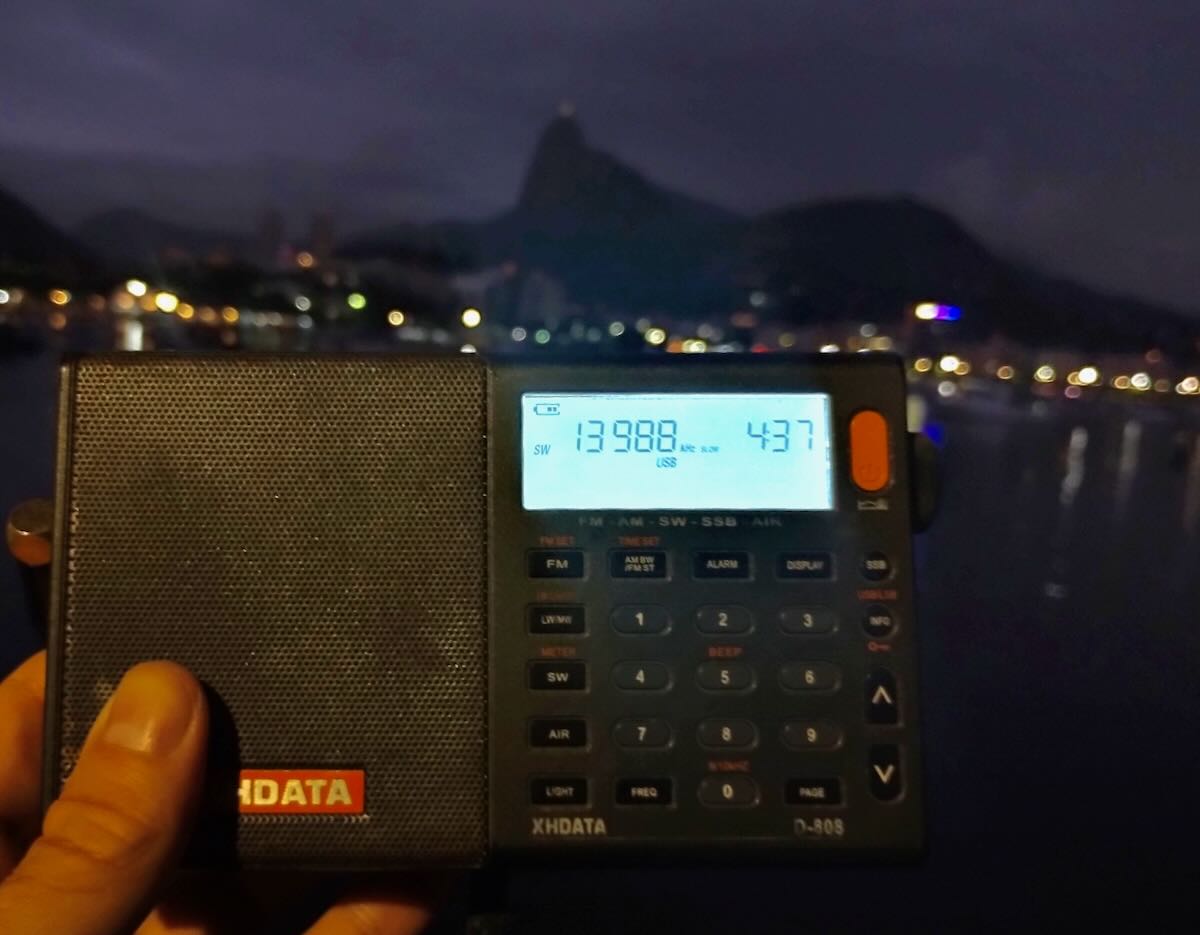
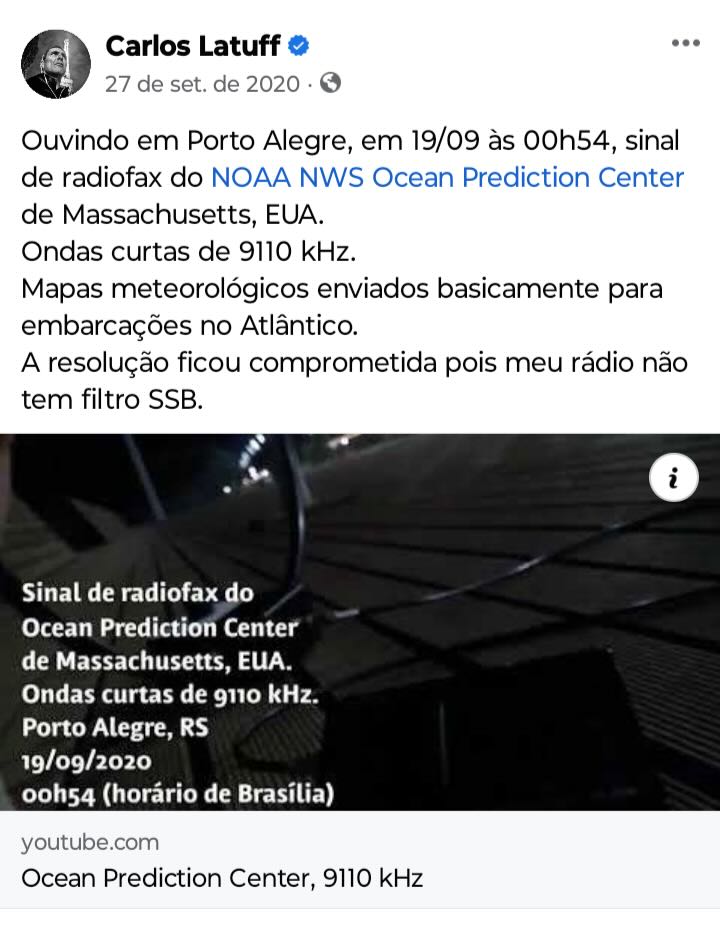
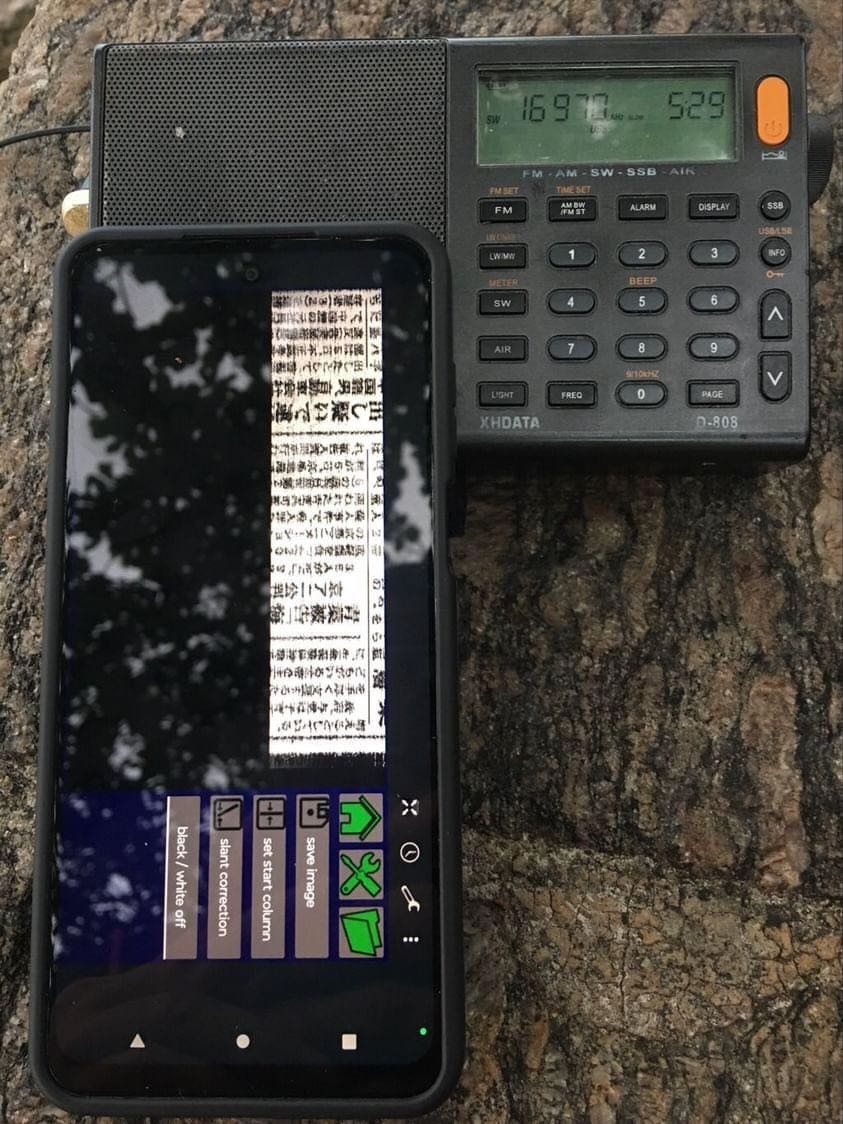
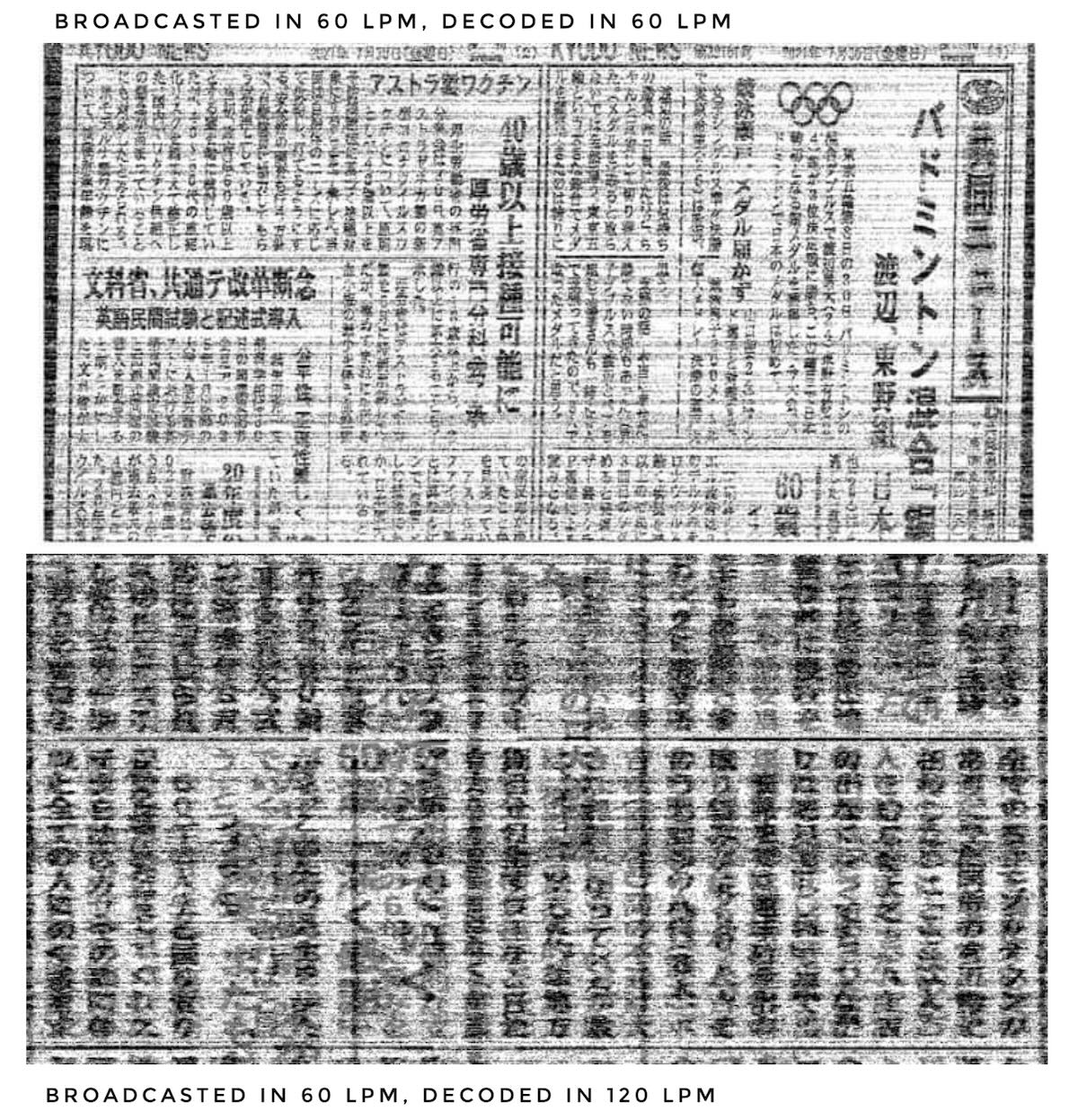
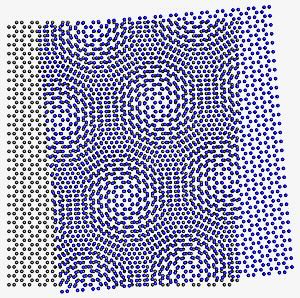
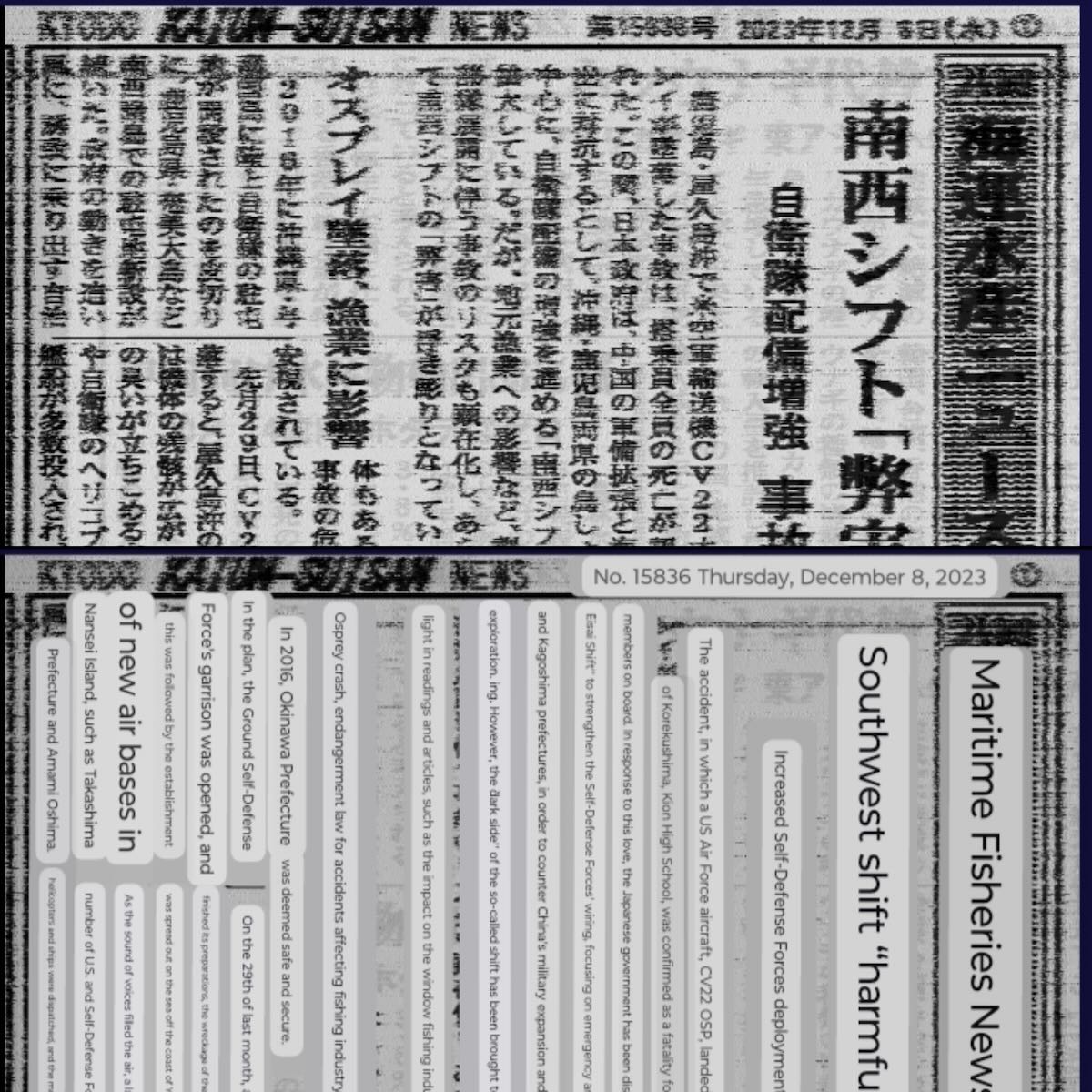
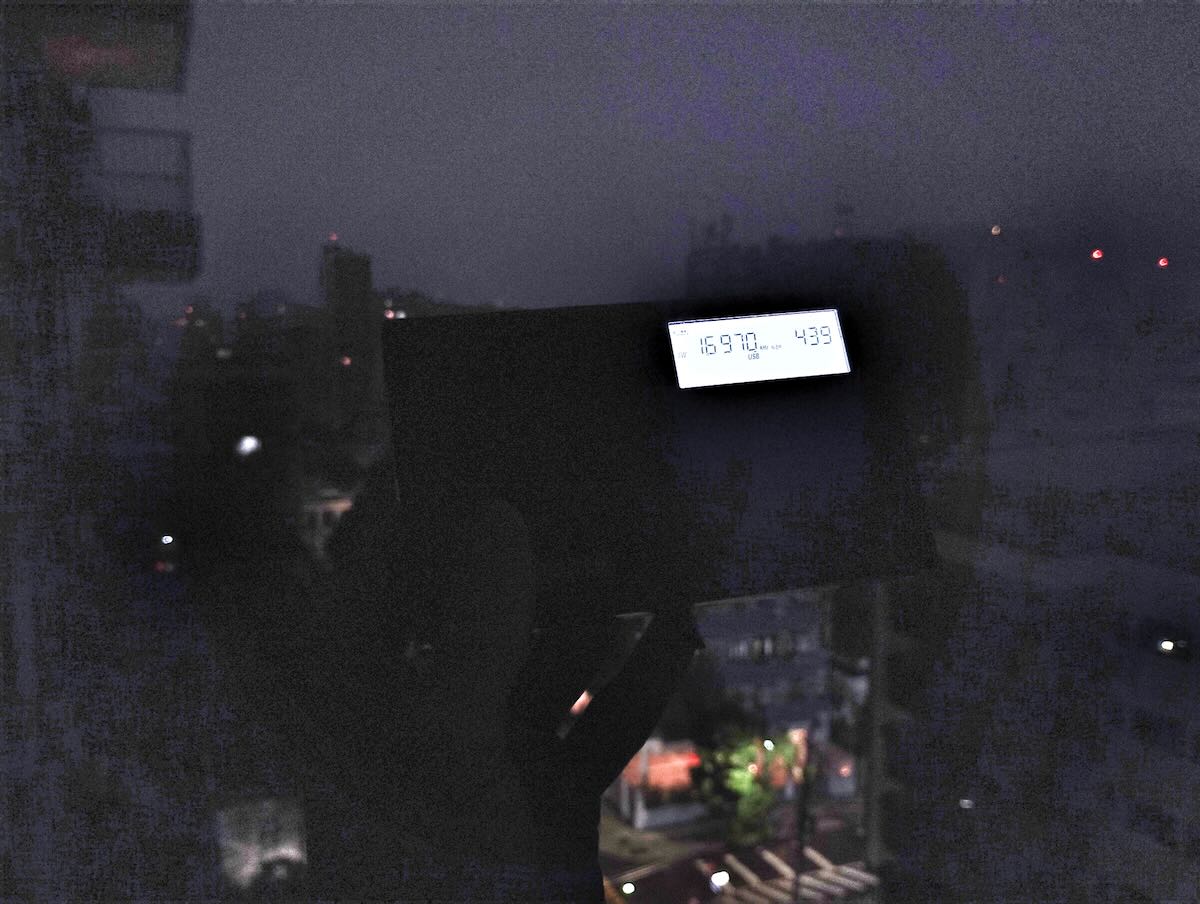
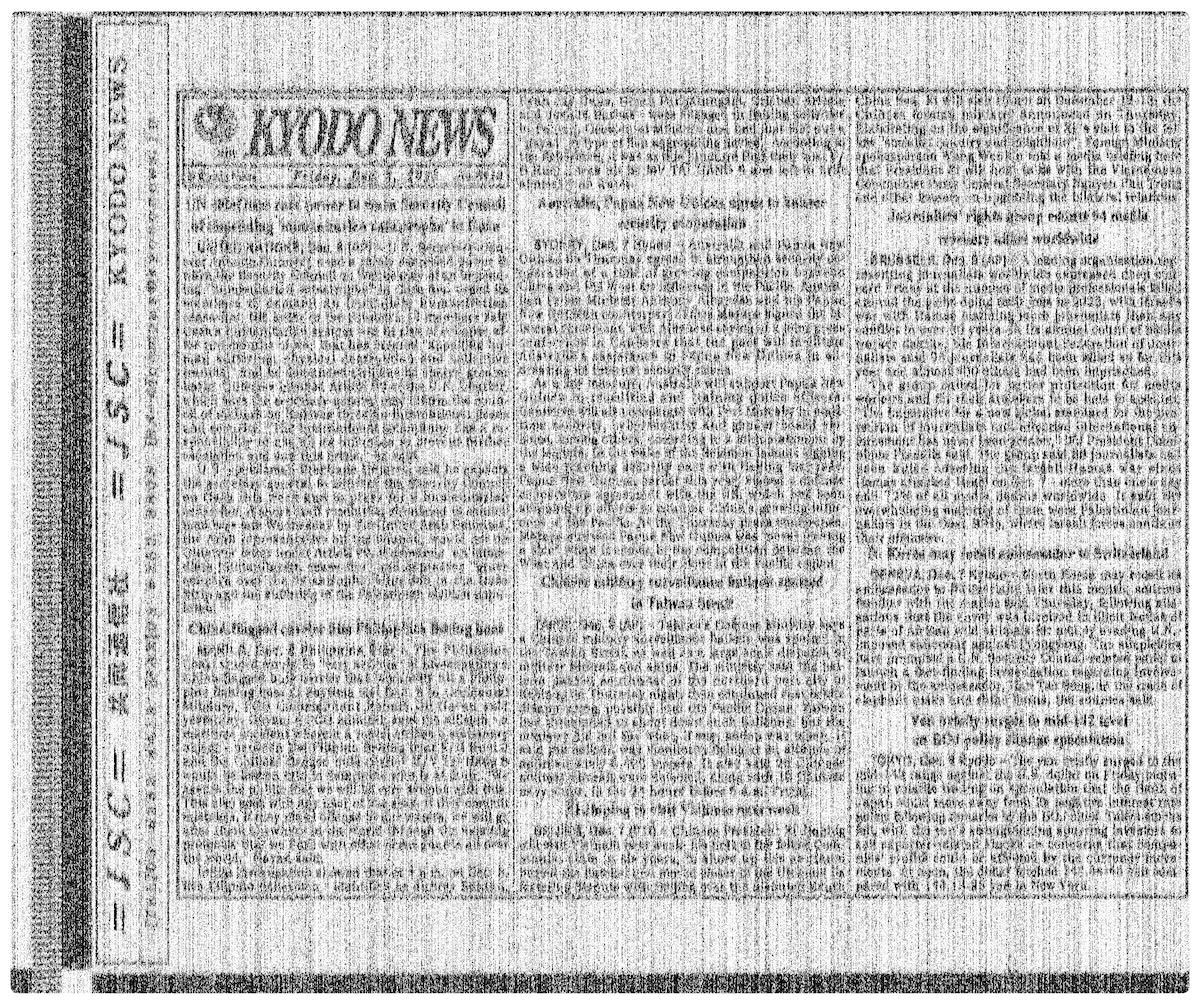
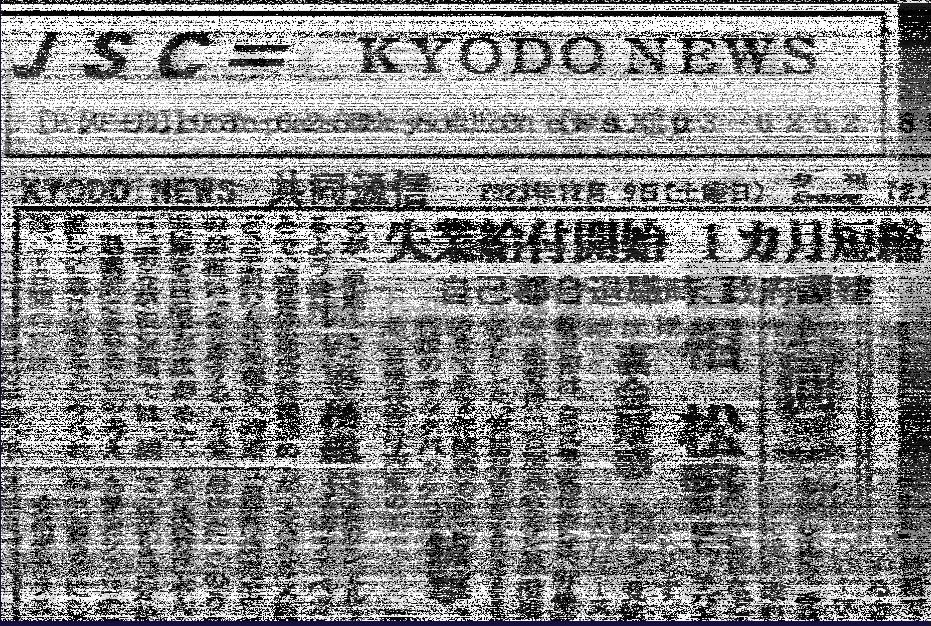
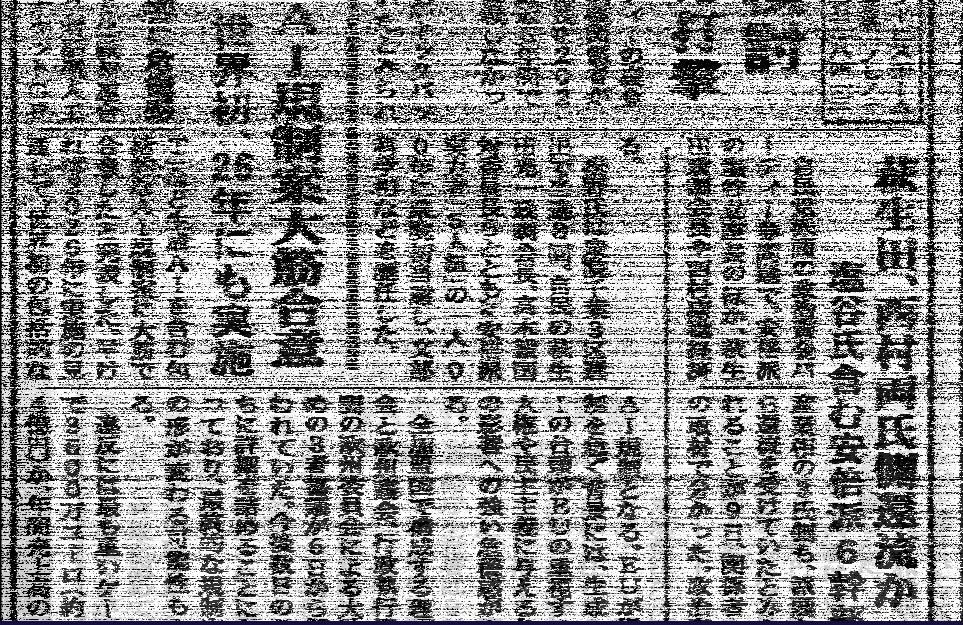
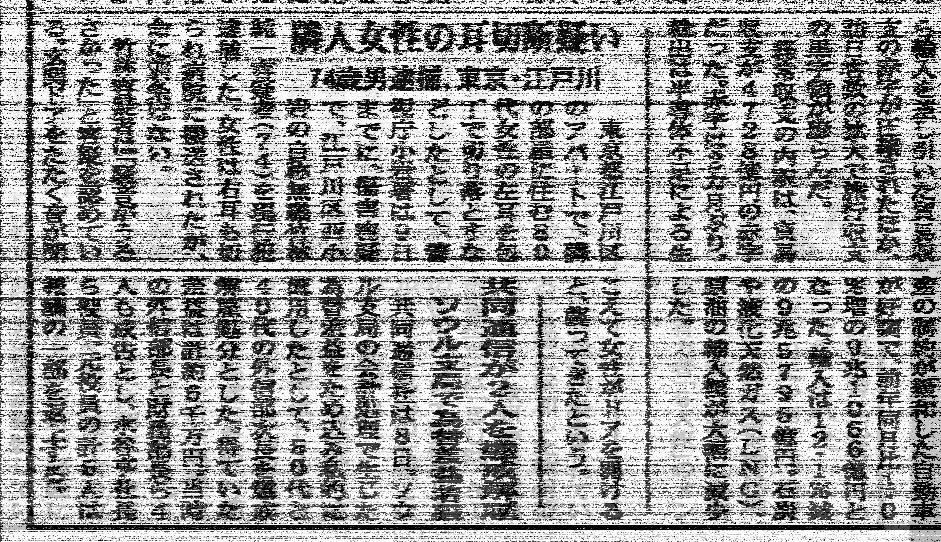
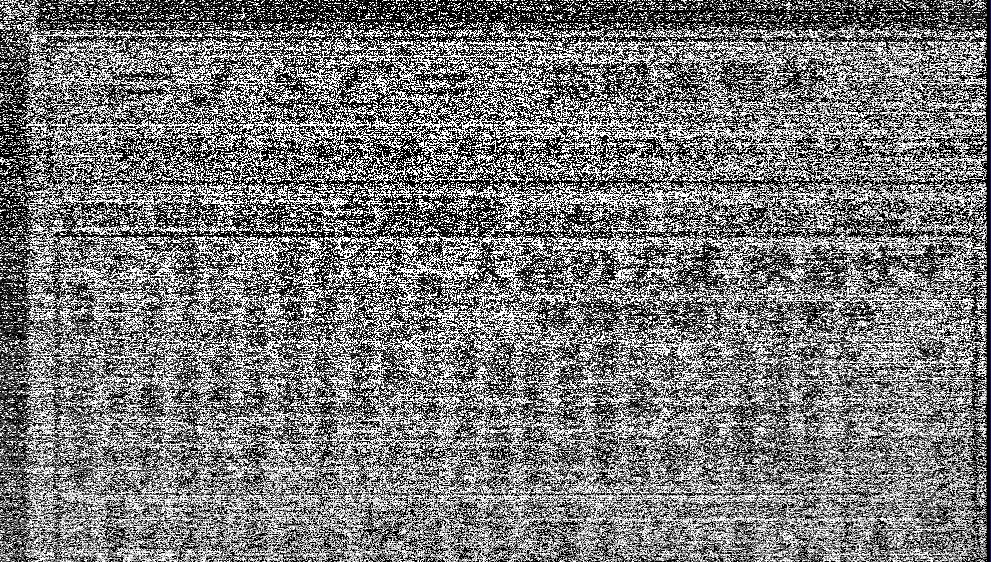
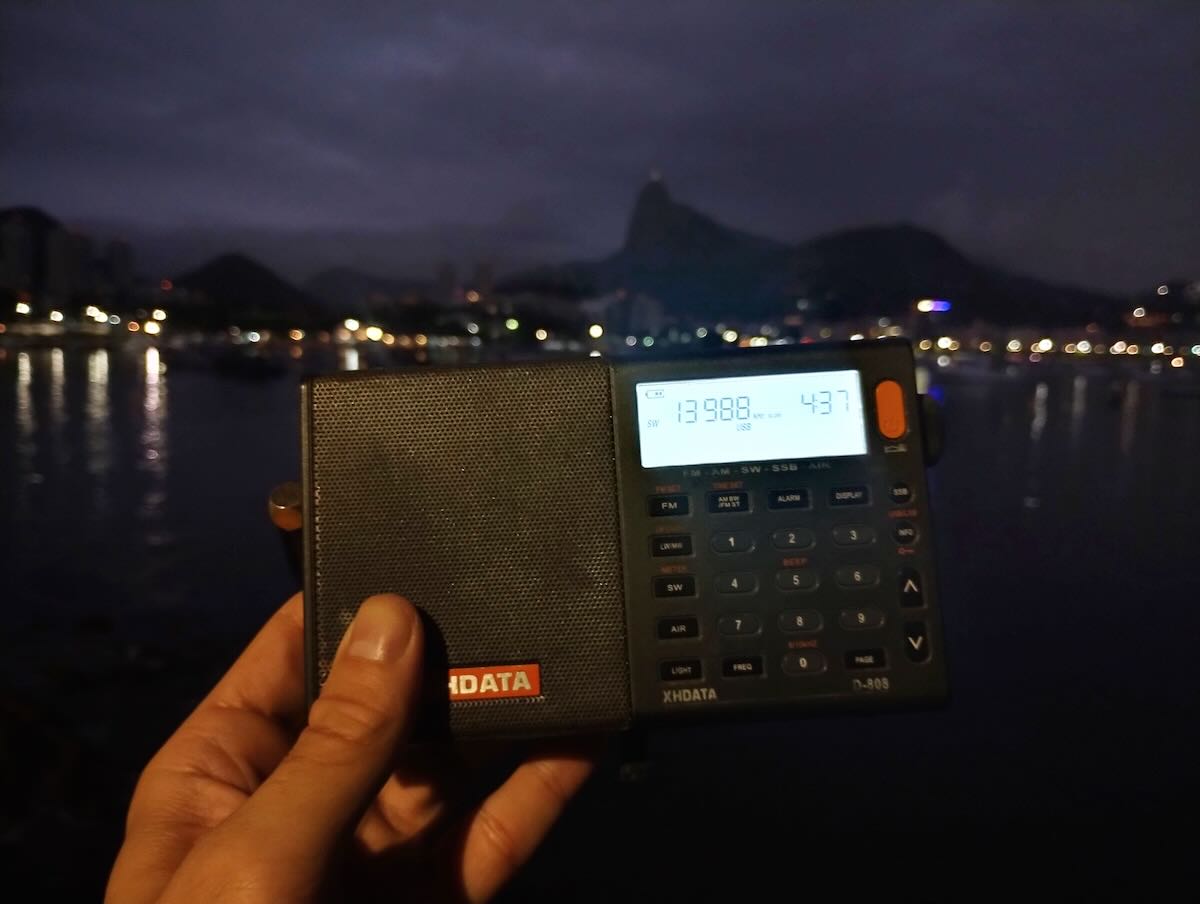
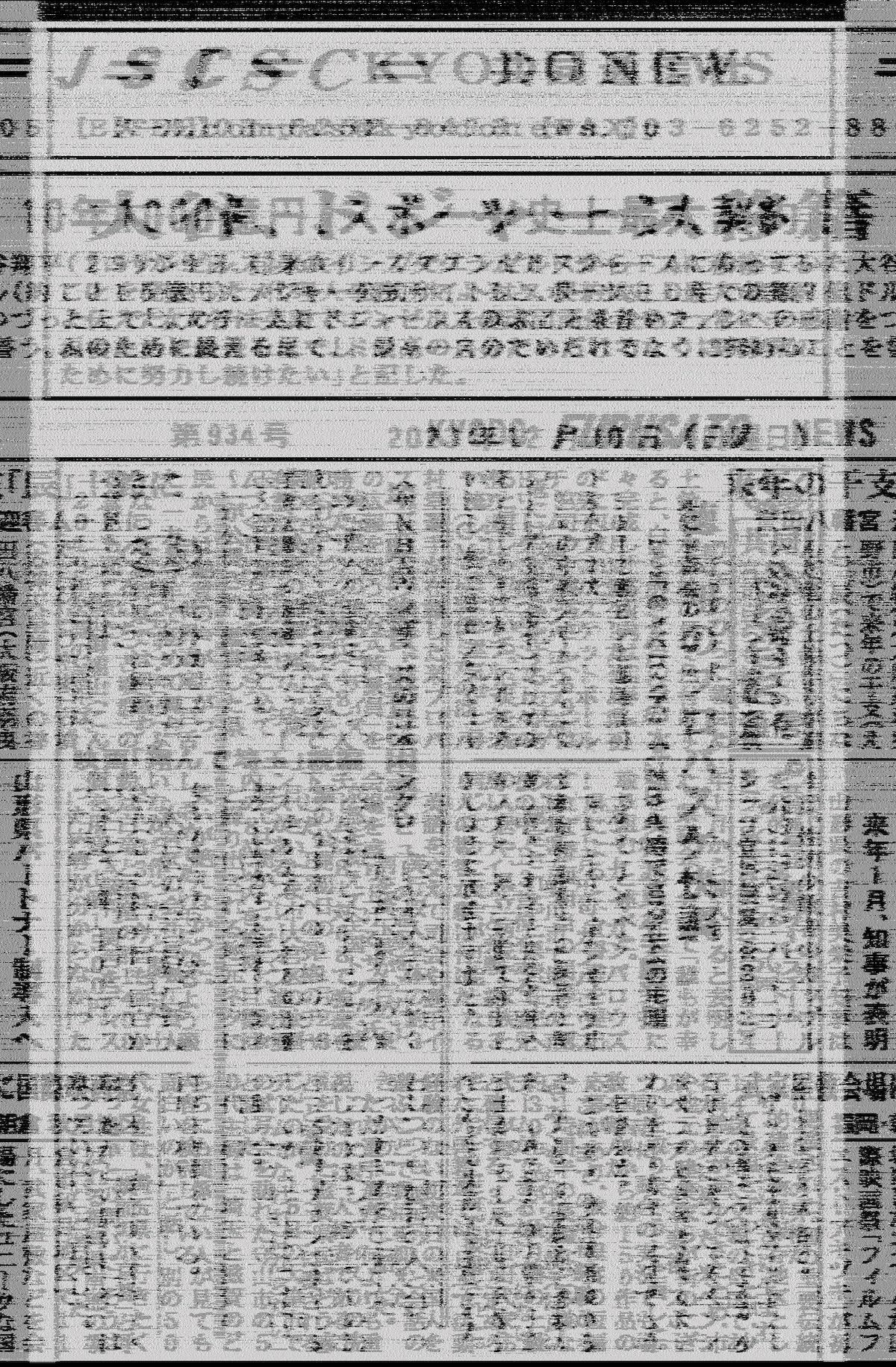
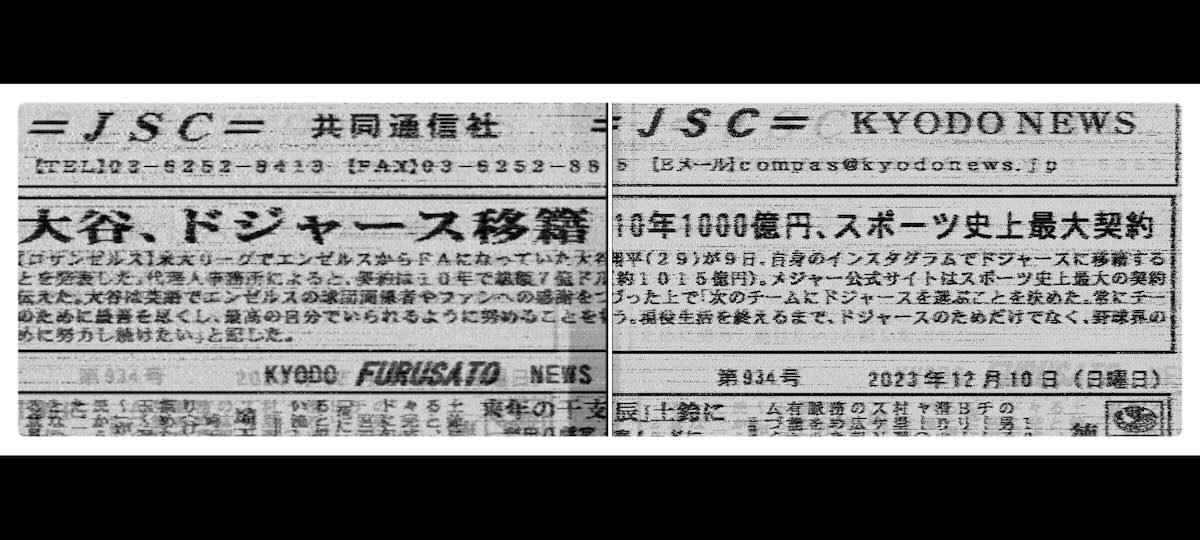
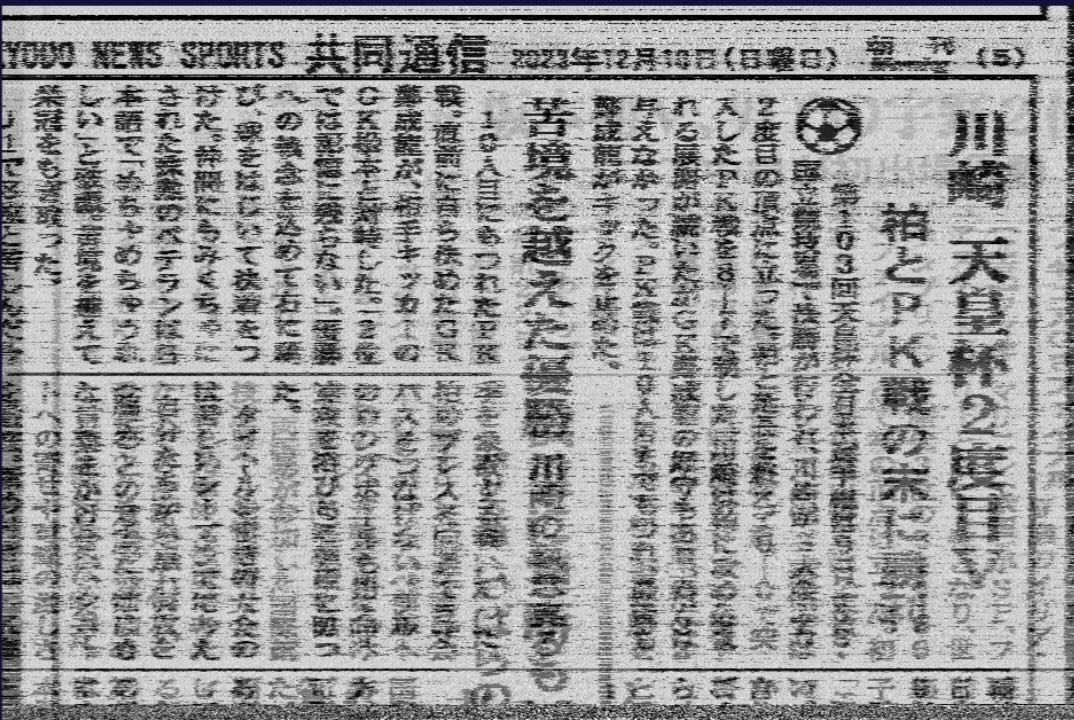
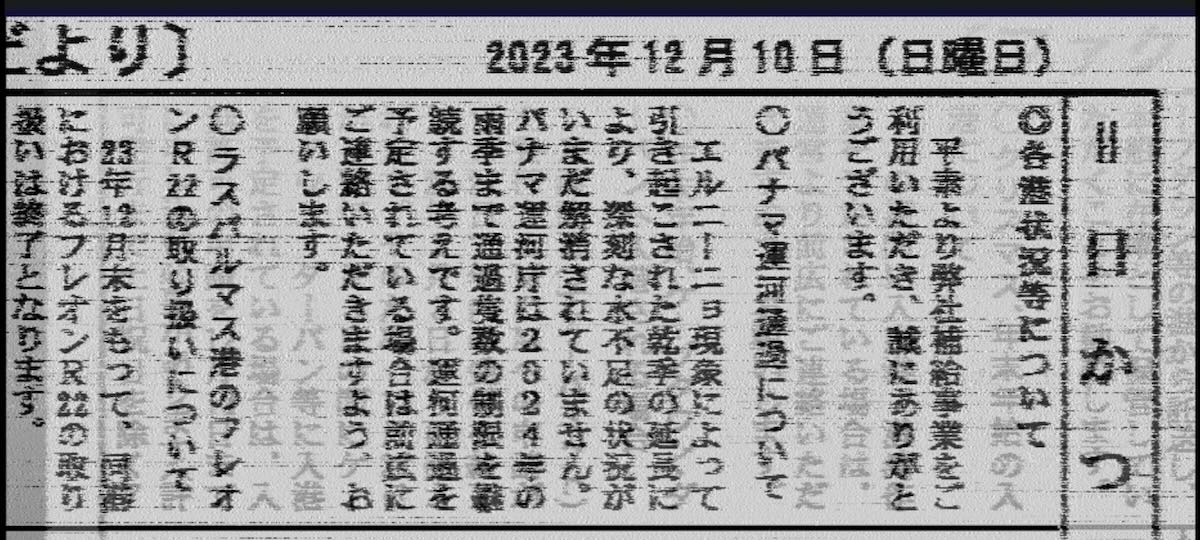
I have logged them only once here in Hope BC (west coast Canada) at around 0200 back in September. Using my AirSpy HF+ Discovery and SDR# I tune to 16969.1 khz USB
Thanks for your feedback, Tony. Is the signal that hard to catch in your neighborhood?
Hi Carlos — yes — it is difficult catch at least for me. That 16 mhz frequency is the only one I have been able to get. This is the full list, with call sign, but it is possibly outdated:
From Japan:
JJC: 4316 kHz ALL BROADCAST TIMES 5 kW
JJC: 8467.5 kHz ALL BROADCAST TIMES 10 kW
JJC: 12745.5 kHz ALL BROADCAST TIMES 15 kW
JJC: 16971 kHz ALL BROADCAST TIMES 15 kW
JJC: 17069.6 kHz ALL BROADCAST TIMES 15 kW
JJC: 22542 kHz ALL BROADCAST TIMES 15 kW
From Singapore
9VF/252: 16035 kHz 0740-1010, 1415-1815 10 kW
9VF/252: 17430 kHz 0740-1010, 1415-1815 10 kW
Subtract 1.9 khz for the carrier and use USB
I do find it odd that I have a difficult time receiving them, as I get WEFAX from Tokyo, Seoul, and China on a regular basis
Yes 16971 kHz is the only active frequency for Kyodo News.
I agree with you, John.
There’s a touch of challenge to catch this signal that comes from so far away.
But you know, at least in Porto Alegre and Rio de Janeiro, Kyodo News signal at early morning arrives very well. It surprises me that some people can’t listen to it.
Ah, the mysteries of shortwaves. 🙂
Greetings from Brazil!
Thanks Carlos for this super detailed report on radiofax!!! It is your posts that introduced me to this idea.
Why do it? Great question and you did well answering it. As you say, we can Google these same fax images any time we want.
For me it’s just the challenge. Combining my radio “weapons” to defeat the propagation “monsters”. It’s fun and educational to tweak the signals and watch how the incoming fax itself reacts. It is satisfying when you manage to get a really good copy with meager resources.
I have as yet not received Kyodo from my Michigan QTH, but maybe… someday.
73s!